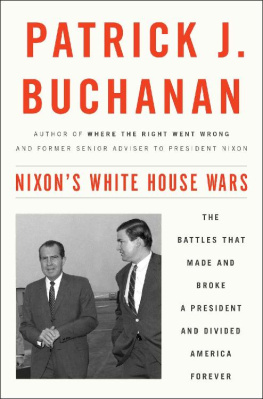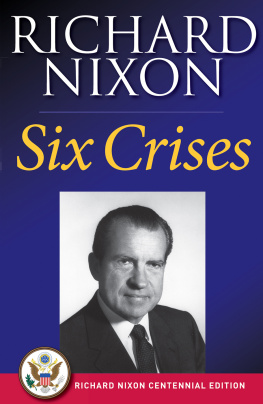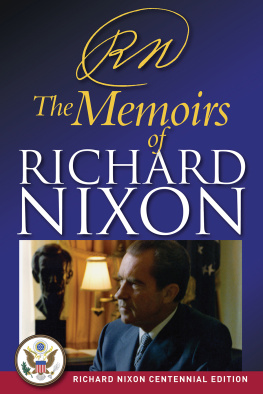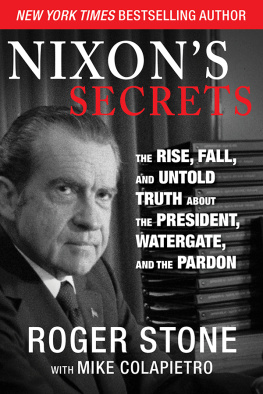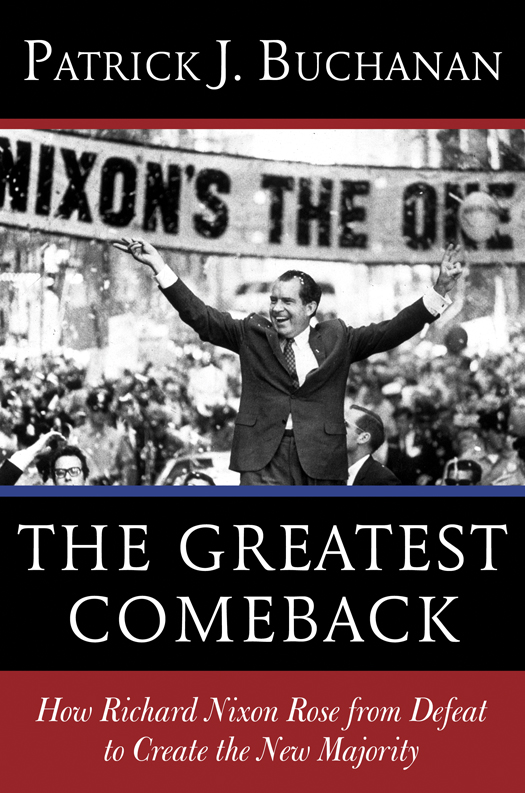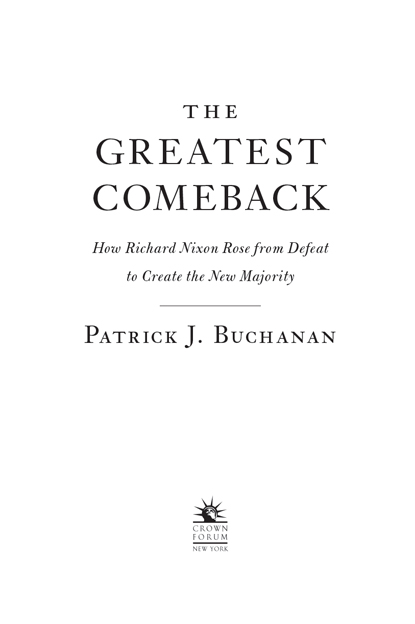Patrick J. Buchanan - The Greatest Comeback: How Richard Nixon Rose from Defeat to Create the New Majority
Here you can read online Patrick J. Buchanan - The Greatest Comeback: How Richard Nixon Rose from Defeat to Create the New Majority full text of the book (entire story) in english for free. Download pdf and epub, get meaning, cover and reviews about this ebook. year: 2014, publisher: Crown Forum, genre: Detective and thriller. Description of the work, (preface) as well as reviews are available. Best literature library LitArk.com created for fans of good reading and offers a wide selection of genres:
Romance novel
Science fiction
Adventure
Detective
Science
History
Home and family
Prose
Art
Politics
Computer
Non-fiction
Religion
Business
Children
Humor
Choose a favorite category and find really read worthwhile books. Enjoy immersion in the world of imagination, feel the emotions of the characters or learn something new for yourself, make an fascinating discovery.

- Book:The Greatest Comeback: How Richard Nixon Rose from Defeat to Create the New Majority
- Author:
- Publisher:Crown Forum
- Genre:
- Year:2014
- Rating:3 / 5
- Favourites:Add to favourites
- Your mark:
The Greatest Comeback: How Richard Nixon Rose from Defeat to Create the New Majority: summary, description and annotation
We offer to read an annotation, description, summary or preface (depends on what the author of the book "The Greatest Comeback: How Richard Nixon Rose from Defeat to Create the New Majority" wrote himself). If you haven't found the necessary information about the book — write in the comments, we will try to find it.
After suffering stinging defeats in the 1960 presidential election against John F. Kennedy, and in the 1962 California gubernatorial election, Nixons career was declared dead by Washington press and politicians alike. Yet on January 20, 1969, just six years after he had said his political life was over, Nixon would stand taking the oath of office as 37th President of the United States. How did Richard Nixon resurrect a ruined career and reunite a shattered and fractured Republican Party to capture the White House?
In The Greatest Comeback, Patrick J. Buchanan--who, beginning in January 1966, served as one of two staff members to Nixon, and would become a senior advisor in the White House after 1968--gives a firsthand account of those crucial years in which Nixon reversed his political fortunes during a decade marked by civil rights protests, social revolution, The Vietnam War, the assassinations of JFK, RFK, and Martin Luther King, urban riots, campus anarchy, and the rise of the New Left. Using over 1,000 of his own personal memos to Nixon, with Nixons scribbled replies back, Buchanan gives readers an insiders view as Nixon gathers the warring factions of the Republican party--from the conservative base of Barry Goldwater to the liberal wing of Nelson Rockefeller and George Romney, to the New Right legions of an ascendant Ronald Reagan--into the victorious coalition that won him the White House. How Richard Nixon united the party behind him may offer insights into how the Republican Party today can bring together its warring factions.
The Greatest Comeback is an intimate portrayal of the 37th President and a fascinating fly on-the-wall account of one of the most remarkable American political stories of the 20th century.
Patrick J. Buchanan: author's other books
Who wrote The Greatest Comeback: How Richard Nixon Rose from Defeat to Create the New Majority? Find out the surname, the name of the author of the book and a list of all author's works by series.

